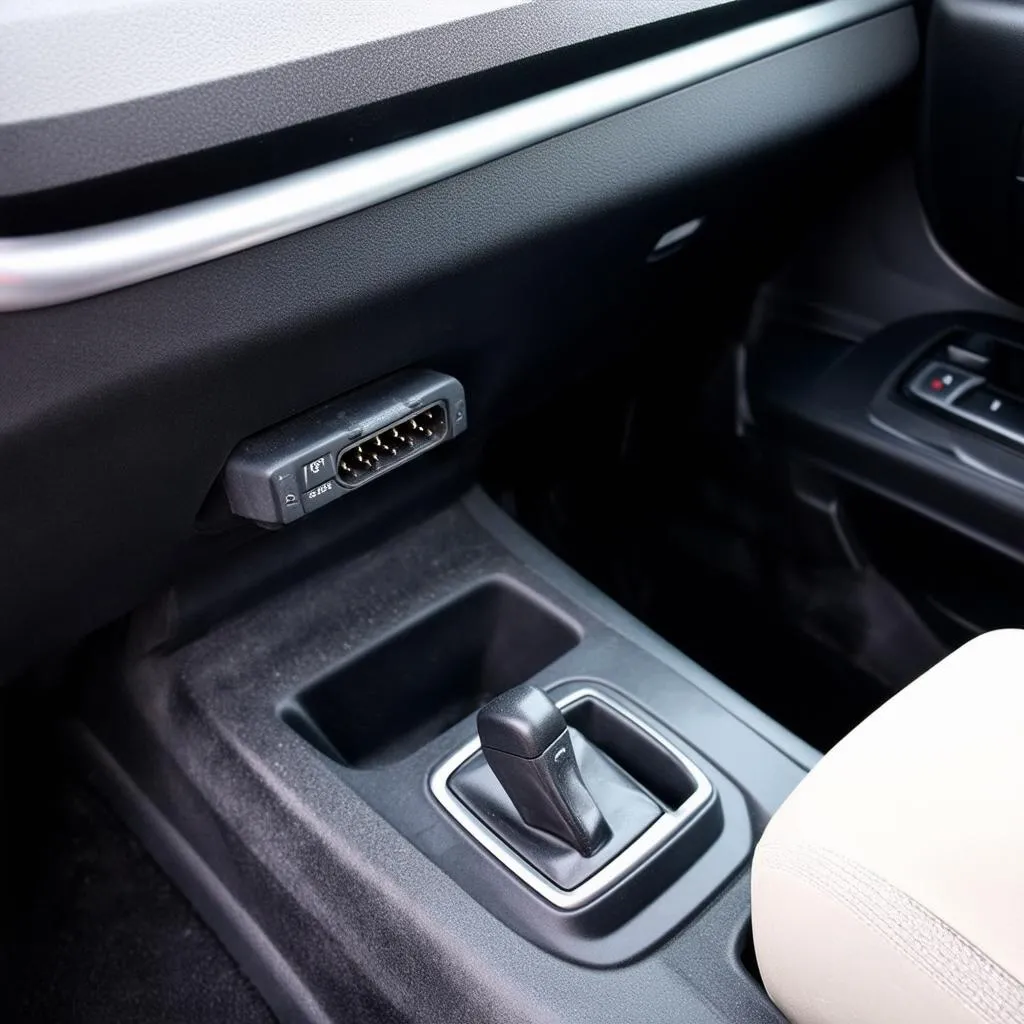Have you ever felt like you were on a treasure hunt in your own car? That’s what it can feel like when you’re trying to locate your OBD-II port, especially if you’re a new owner of a 2016 Hyundai Tucson. This small, often overlooked port is your gateway to understanding your car’s health and performance. So, where did Hyundai hide it?
Understanding the Importance of the OBD-II Port
Before we embark on our quest to find the OBD port, let’s understand why it matters. The OBD-II (On-Board Diagnostics) port is like a health monitor for your car. It allows you to connect diagnostic tools, like a dealer-level scanner for European cars, to:
- Read and clear trouble codes: Think of this as deciphering your car’s “check engine” light.
- Monitor real-time data: See how your engine is performing, check fuel economy, and more.
- Program keys and modules: Some advanced tools allow you to program new keys or even make adjustments to your car’s settings.
In the world of car maintenance, the OBD port is a powerful tool that gives you, the owner, greater control and understanding.
Locating the OBD Port on Your 2016 Hyundai Tucson
Okay, enough suspense! The 2016 Hyundai Tucson’s OBD port is typically located under the driver’s side dashboard, near the hood release lever. It’s usually covered by a small, removable panel.
Here’s how to find it:
- Sit in the driver’s seat and look beneath the steering wheel.
- Locate the hood release lever on the left side of the dashboard.
- Feel around the area near the lever for a small rectangular port, often covered by a plastic cover.
Important Note: While the location described above is the most common, there might be slight variations depending on the specific trim level of your Tucson. If you’re having trouble finding it, refer to your owner’s manual for a diagram specific to your vehicle.
 OBD Port Location
OBD Port Location
Why is Finding the OBD Port Sometimes Challenging?
You might be wondering why something as essential as the OBD port isn’t more prominent. Here are a few reasons:
- Aesthetics: Car manufacturers try to keep the interior of your car looking sleek and uncluttered. Hiding the port helps maintain a cleaner aesthetic.
- Protection: Tucking the port away protects it from accidental damage or exposure to the elements.
- Standardization: The OBD-II standard, adopted in 1996, mandates that the port be located within a certain area near the driver’s seat, but it doesn’t specify an exact location.
Common Questions About the Hyundai Tucson OBD Port
Here are some questions we often receive from Tucson owners:
- Can I use any OBD scanner on my 2016 Tucson? While many generic OBD-II scanners will work, for more advanced functions like programming or in-depth diagnostics, you might need a Hyundai-specific or dealer-level scanner.
- Is it safe to use the OBD port myself? Yes, using the OBD port is generally safe as long as you’re careful and follow instructions.
- What can I do if I can’t find my OBD port? Double-check your owner’s manual, or consult with a trusted mechanic or Hyundai dealership for assistance.
 Mechanic Using OBD Tool
Mechanic Using OBD Tool
Exploring Further with Your 2016 Hyundai Tucson
Finding your OBD port is just the first step. From checking for error codes to monitoring your engine’s performance, there’s a lot you can do with this powerful diagnostic tool.
Need Assistance?
If you need help finding the right tools or understanding how to use your Hyundai Tucson’s OBD port, we’re here to assist you. Contact us on WhatsApp at +84767531508 for expert support on diagnostic tools and car repair.
Let us know if you have any other questions!